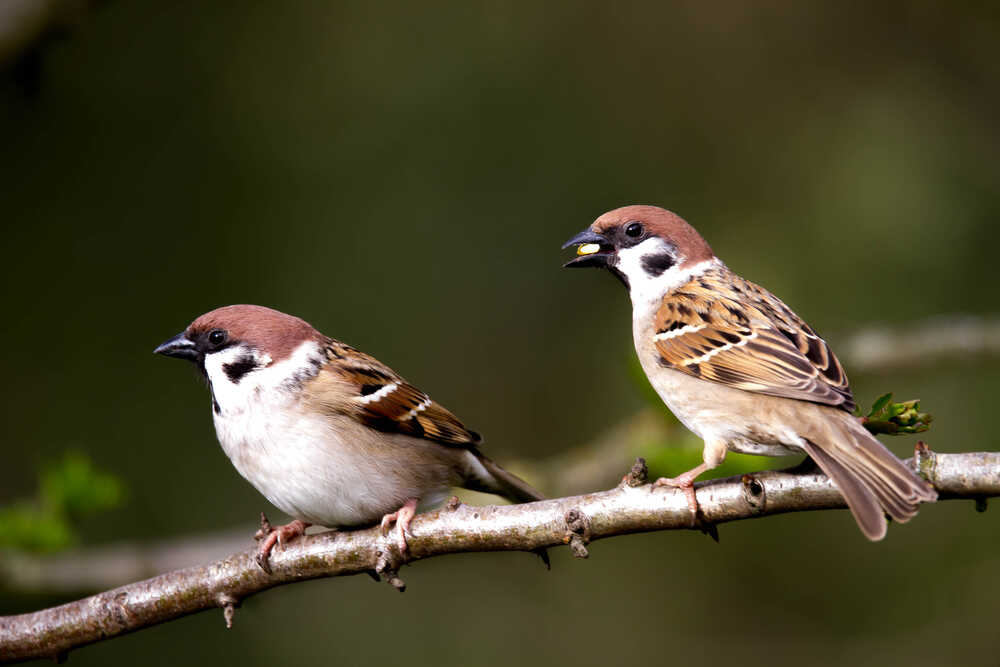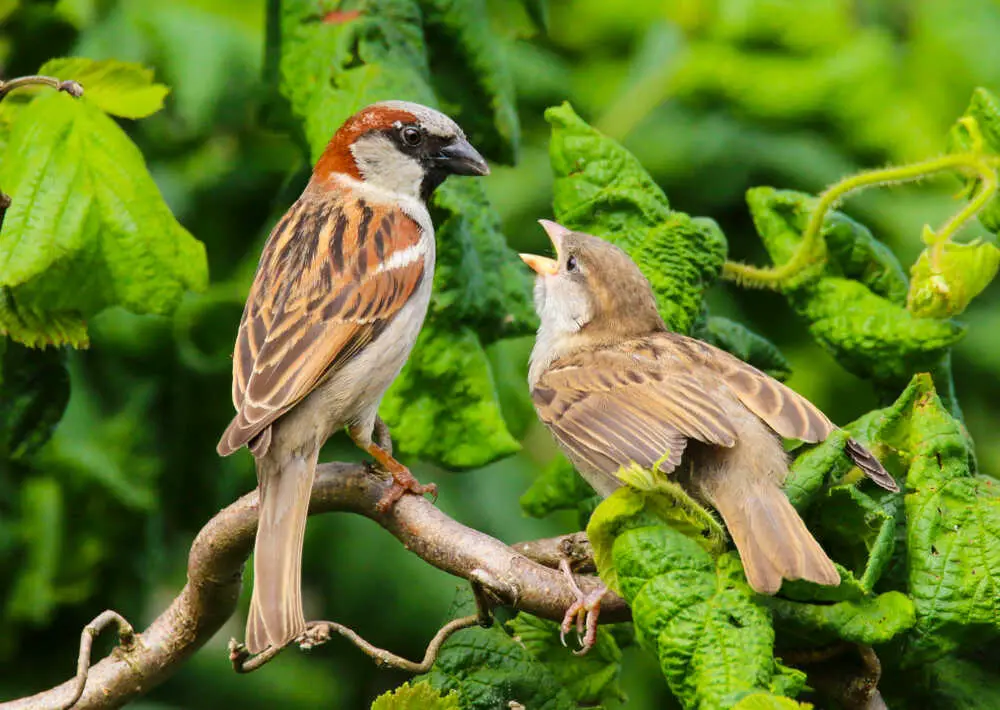There are two species of sparrow native to Britain; the house and the tree sparrow.
As their names suggest, the first is happy in urban settings near to humans, and the second prefers the peace of rural life.
If you think that might be the only notable change, you’d be wrong.
‘What is the difference between a house sparrow and a hedge sparrow‘ will enlighten us all so that we can hopefully identify the birds at first glance?
Several defining factors separate the sparrow species, including their appearance, habitats, diet, and breeding habits.
Let’s starts with their population;
Table of Contents
Population
Tree Sparrow
1970 saw a steep decline in the number of tree sparrows in the UK. Their population dropped by a massive 93%, and they were put on the Red List of birds causing conservation concern.
I am happy to report that the decline stabilised and has begun to grow in more recent years.
There are currently 200,000 territories in Britain, most found in central and eastern England.
House Sparrow
Similarly, the house sparrows population declined by almost 70% in the 1970s but has seen gradual improvement. It is probably due to their ability to source food in almost any situation.
There are currently 5,300,000 breeding pairs in Britain, seen almost everywhere other than the highest points of Scotland.
Appearance

Tree Sparrow
Tree sparrows are small birds, measuring only 14cm from head to tail-tip; they weigh between 19g-25g.
The easiest way to tell them apart is by their crown; both males and females have a solid patch of chestnut-brown on their heads and at the nape of their neck.
They have adorable cheek spots; flashes of black on a white background.

House Sparrow
The male house sparrow has a light grey crown and black markings around his eyes, throat, and upper chest. The female’s crown is described as buff, a soft brown with a tinge of yellow.
Of the two types of birds, the house sparrow is slightly larger. They typically measure 15cm and weigh 24g–38g.
Diet
Tree Sparrow
The adult birds predominantly eat insects and seeds; their conical bills are strong and specially adapted to easily break husks and pods. They also eat cereals and weeds.
If their regular food source dwindles during winter, tree sparrows will eat from feeders in gardens although they prefer to peck at the discarded seeds on the ground.
Young sparrows are feed solely on insects and spiders.
House Sparrow
It is easier to say what the house sparrow won’t eat! In the wild, they are mostly vegetarian and snack on seeds, plants, soft buds, grains, and young grass roots.
At the bird table, they enjoy almost anything but are especially fond of kibbled peanuts, suit, mixed seed, and fruit. They are comfortable eating from hanging feeders.
During the breeding season, house sparrows develop a carnivorous nature. They feed the nestlings on insects and spiders, often partaking in some themselves. They enjoy caterpillars, aphids, bees, and moths.
They are opportunistic eaters and think nothing of rifling through bins for scraps or eating leftover chips from the roadside.
Habitat
Tree Sparrow
Tree sparrows are usually spotted on farmland, fluttering in and out of hedgerows or in woodland. They shy away from built-up urban areas, preferring to surround themselves with the countryside.
They build their nests in natural forming cavities in trees or hidden amongst the branches of thick hedges and shrubs. If they are in a covert and secure position, tree sparrows may use nesting boxes.
If winter food supplies get scarce, they will make their way into gardens and parks.
House Sparrow
House sparrows tend to build their nests in crevices in buildings, houses, and barns. Their nests are regularly spotted in chimney stacks, beneath the eaves of properties, even in disused agriculture machinery or old wellie boots!
They do build free-standing nests, normally deep within a hedge or amongst the branches of a conifer tree.
House sparrows are so noisy and gregarious; they happily live close to humans in gardens or parks. They inhabit towns, villages, and inner cities.
Breeding Habits
Tree Sparrow
The birds mate for life and have 2-3 clutches each year. Each clutch consists of 5 or 6 eggs, which are incubated entirely by the female in their scruffy-looking nest.
House Sparrow
Once mated, the male and female remain faithful to each other and their nest for life.
They have 2-3 clutches per year; if the conditions are favourable and the other broods were successful, they may even attempt a fourth.
Final thoughts
Tree sparrows are definitely more gentile than house sparrows; they are shy and seem to have a dignified air.
I must admit to enjoying watching the behaviour of my house sparrows. They are loud and outgoing – everyone knows when they are around; my bird tables seems to empty twice as quick!
There are so many differences between the house sparrow and tree sparrow that it’s hard to believe that they are so closely related!
They might look similar, but with a little know-how; they are easy to differentiate between.
